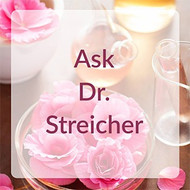Aromatherapy Research: How it Works
Apr 21st 2021
Posted by Amrita Aromatherapy
Bella H. Asks:
Hello! My name is Bella H. and I am a senior in high school conducting a research paper. My topic is alternative therapies and I was hoping to gain some insight concerning aromatherapy. If you could take the time to answer these few questions, it would be greatly appreciated! Here are the questions:
1. What parts of the internal anatomy does aromatherapy target?
2. Why do different scents trigger different feelings/responses?
3. What are some long term benefits of aromatherapy?
I sincerely hope to hear back from you, thank you for any help you can provide!
Dr. Streicher Answers:
Dear Bella,
1. What parts of the internal anatomy does aromatherapy target?
Different oils target different organs. Different organs have on their cell surfaces different receptors and different Essential Oil molecules interact with different receptors. This way, different oils have different effects on different organs. For example verbenone, a compound in a special rosemary verbenone interacts with liver cells, improving the functioning of the liver.
2. Why do different scents trigger different feelings/responses?
Psychology tries to reduce this to responses based on past experiences, i.e. simple Pavlov reflexes. However, this is a very limited view. We know that different oils evoke different brain waves and different endocrine responses independent of memory.
3. What are some long term benefits of aromatherapy?
To put it into one phrase: Alignment with the forces of nature. To expand: better physical, mental, emotional, spiritual and social health. Essential Oils connect. They improve psychosomatic connection, they connect us with our inner self and with our emotions, they connect us with other people and create balance between different parts of ourselves and between us and our environment.
Best Wishes,
Christoph Streicher, Ph.D.
Original Published: 2015-02-03 / Last Modified: 2025-5-22

